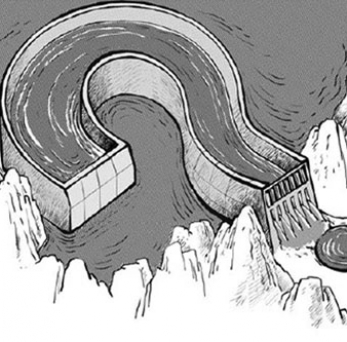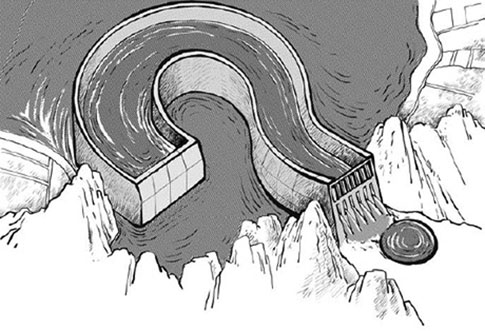
News & Events
Hydro fallacies
 Retail electricity rates in Nepal are set to increase by another 20 percent. In mid-May, the Board of Nepal Electricity Authority (NEA) endorsed a proposal to increase electricity rates for all consumer categories, except those consuming less than 20 kWh per month. The proposal now moves to the Electricity Tariff Fixation Commission (ETFC), where the measure is likely to be approved.
Retail electricity rates in Nepal are set to increase by another 20 percent. In mid-May, the Board of Nepal Electricity Authority (NEA) endorsed a proposal to increase electricity rates for all consumer categories, except those consuming less than 20 kWh per month. The proposal now moves to the Electricity Tariff Fixation Commission (ETFC), where the measure is likely to be approved.
This is the second such tariff increase in two years. Last year, ETFC allowed a similar 20 percent hike in retail electricity tariffs that is expected to come into force at the start of the new fiscal year this July.
 Img :China Daily
These tariff increases should go some way towards covering the losses at NEA. In fiscal year (FY) 2011-2012, the most recent year for which NEA’s annual report is available, the company lost Rs 8.5 billion (approximately US $94 million at current exchange rate). That same year it wrote off Rs. 27 billion (US $300 million) in accumulated losses.
There is little doubt that NEA needs fiscal strengthening. The 20 percent increase in retail rate could have helped increase revenues at NEA by Rs 4 billion in FY 2011-2012, covering about half of the losses for the year. The cumulative 40 percent increase in retail rates could theoretically help to cover a substantial part of the annual financial losses at NEA.
How much the increase in retail rates will actually help plug NEA losses, however, remains unclear. Some part, possibly a large share, of the increase in retail electricity rates will immediately flow down to independent power producers (IPP) for the electricity that NEA buys from them. Earlier this year, for instance, NEA agreed to increase the purchase price from several new small and mid-sized hydro plants to adjust for the higher debt and foreign currency costs that IPPs were facing.
Img :China Daily
These tariff increases should go some way towards covering the losses at NEA. In fiscal year (FY) 2011-2012, the most recent year for which NEA’s annual report is available, the company lost Rs 8.5 billion (approximately US $94 million at current exchange rate). That same year it wrote off Rs. 27 billion (US $300 million) in accumulated losses.
There is little doubt that NEA needs fiscal strengthening. The 20 percent increase in retail rate could have helped increase revenues at NEA by Rs 4 billion in FY 2011-2012, covering about half of the losses for the year. The cumulative 40 percent increase in retail rates could theoretically help to cover a substantial part of the annual financial losses at NEA.
How much the increase in retail rates will actually help plug NEA losses, however, remains unclear. Some part, possibly a large share, of the increase in retail electricity rates will immediately flow down to independent power producers (IPP) for the electricity that NEA buys from them. Earlier this year, for instance, NEA agreed to increase the purchase price from several new small and mid-sized hydro plants to adjust for the higher debt and foreign currency costs that IPPs were facing.
But the issue on Nepali power sector has never really been about electricity prices.
Even before ETFC had time to consider the proposal, Nepali business chambers had provided in writing that they would be willing to pay as much as Rs. 15 per unit (kWh) (US $167/MWh) for reliable grid supply. This was 50 percent higher than NEA’s average realization per unit (kWh) of electricity sold post the sought 40 percent increase in retail rates.
In reality, Nepali businesses are routinely paying as much as Rs 20-100 per unit of electricity (kWh) (US $220-1,110/MWh) by using private generation to supplement the gaps in NEA supply. If anything, the offer of higher rates is possibly too low to be a meaningful incentive for a solution.
Many businesses, particularly industries, service and health centres, are beginning to build dedicated feeder lines. Some of them are even connecting directly into higher voltage transmission lines which also allow them to bypass the load-shedding altogether. These customers, reportedly, are facing retail tariff increases of 100 percent or higher. Surely, they are not complaining.
Most Nepalis, households and businesses alike, would happily agree to pay double or triple their current electricity costs if a feeder line that gave them continuous supply were miraculously available to them. Poor electricity supply, rather than costs, is what currently hurts.
The story of electricity in Nepal has never been about retail rates, but about shortages (or load-shedding as we colloquially call it). Forced load-shedding continues to persist and has been progressively getting worse every year.
At the same board meeting where the proposed 20 percent retail rate hike was endorsed, NEA decided to approve the upgrade of Upper Trishuli 3A hydro plant from 60 MW to 90 MW. That proved to be far more contentious, earning the company the ignominious distinction of having its management make a decision that was opposed by all of its trade unions. These trade unions have vowed to block the project’s implementation.
Several top leaders, including former ministers, of the major parties excluding the UCPN (Maoist), promptly took their opposition to the Chairman of the Interim Election Council, Khil Raj Regmi. They demanded that the capacity upgrade be scrapped, charging that the project had involved large kickbacks.
A case on the project is pending before the Commission for the Investigation of Abuse of Authority (CIAA). Many are citing the case as a litmus test of sorts for its newly appointed beleaguered chief, Lok Man Singh Karki, who won a difficult appointment to the post.
Whether or not the Upper Trishuli upgrade involved corruption, the sanctimonious opposition of the ministers that led the protest on the project is hypocritical.
The paralysis of Nepal’s power sector, including the crisis around Upper Trishuli, has been the result of years of accumulated corruption and systematic erosion of NEA’s credibility.
Many of the political parties that now object to the capacity upgrade of Upper Trishuli were themselves involved in the abuse of the sector during their days of leadership. Singling out Upper Trishuli for opposition on grounds of corruption may be convenient but it demonstrates no accountability for their role while in power.
To Nepalis now facing the double whammy of relentless power-cuts and higher prices, the drama around Upper Trishuli appears as nothing more than political opportunism. Maybe there really is a great deal of principled opposition—it’s just that in the absence of electricity for so long and with no immediate prospects of reprieve, principled opposition is rather hard to spot.
In many ways, the power crisis of Nepal resembles the current political crisis where nothing appears to work. An increase in electricity tariffs is unlikely to make load shedding go away. New plants that would help increase supply are charged with corruption and attract widespread opposition. There is little room for reasoned debate and certainly no space for consensus for a broader vision to evolve.
One view of the Nepal power sector is that it is simply passing through a difficult stage of transition. With a stable political environment and an improved investment climate, all will be well again—the rivers will roar downhill and hydro will once again light up our lives.
That is wishful thinking.
The paralysis of our power sector is not merely a reflection of our continued political stalemate. It also suggests that our experiment built on the reliance of hydro and our pipedream of electricity sales to India has come to an end.
The power crisis should be an opportunity to challenge long-held assumptions about our power sector: the abundance of hydro, the primary reliance on hydro, a sector built on the promise of electricity sales to India, a monopoly vertically integrated utility, a centralized grid.
If we can’t spot the fallacies now, we might as well get used to being in the dark. Without a new paradigm for our power sector, we won’t be getting plentiful electricity anytime soon, no matter how stable the government.
bishal_thapa@hotmail.com
Source : Republica / Bishal Thapa


